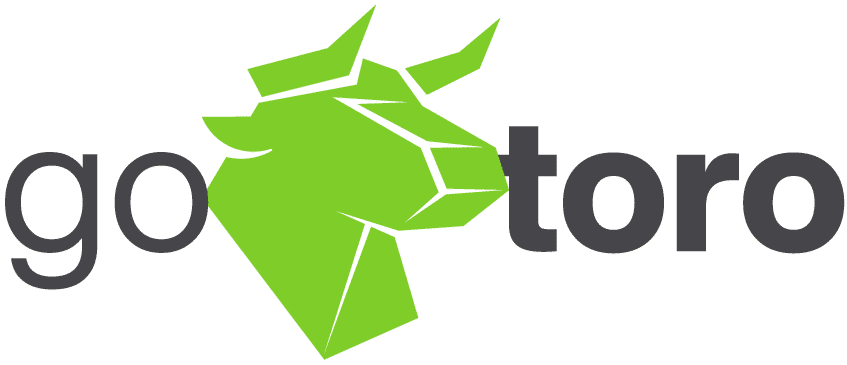In the intricate ecosystem of education, the roles of certified and classified staff are pivotal to fostering a conducive learning environment. Certified staff, including teachers and administrators, bring a wealth of specialized knowledge and pedagogical skills, essential for curriculum delivery and educational leadership. Simultaneously, classified staff—comprising support personnel like aides, custodial staff, and office workers—ensure the smooth operation of school systems, creating a safe and supportive atmosphere for students and faculty alike. However, the journey of certified staff hiring and classified staff hiring presents numerous challenges that school systems must navigate to maintain a high standard of education.
The hurdles in hiring and retaining such vital personnel range from competitive salary packages to conducive work conditions, directly impacting the quality of education and student outcomes. This blog post delves into the core of these issues, aiming to outline practical solutions and best practices for optimizing the hiring process. By addressing the challenges and offering insights into effective recruitment and retention strategies, we aim to support schools in enhancing their educational ecosystem.
Addressing Challenges in Hiring and Retaining Quality Staff

Common Hurdles in Attracting Qualified Candidates
The landscape of certified and classified staff hiring is often marred by obstacles that hinder schools’ ability to attract and retain top talent. Among the most pressing challenges are competitive salaries and benefits packages. With the private sector and other industries offering more lucrative compensation, schools find themselves in a tough spot, struggling to match these offerings. Moreover, the work conditions in schools, including job security, workload, and access to professional development opportunities, play a significant role in a candidate’s decision to pursue or remain in a position within the educational sector.
Staff Retention and High Turnover Rates
Another significant concern is the issue of staff retention. High turnover rates among certified and classified staff can disrupt the learning environment, leading to a lack of continuity and stability for students. Factors contributing to this trend include burnout, insufficient support, and limited career advancement opportunities. The repercussions of such turnover extend beyond the immediate inconvenience, potentially affecting student performance and overall school morale.
On average, 23% of teachers left their school in the 2022-23 school year—a much higher percentage than pandemic rates, but a slight decrease from last year’s turnover spike. – (ERS, 2024)
Impact on Educational Environment and Student Outcomes
The challenges associated with certified and classified staff hiring and retention are not isolated issues; they have a profound impact on the educational environment and, ultimately, student outcomes.
One Vanderbilt study found that “losing a teacher during the school year is linked with a loss of between 32 and 72 instructional days,” which equates to one sixth to nearly half of the school year.
A stable and experienced staff fosters a consistent and supportive learning environment, essential for student success. Conversely, high turnover and staffing challenges can lead to gaps in the curriculum delivery and diminish the overall quality of education. Addressing these challenges is not just about filling vacancies; it’s about building a robust educational ecosystem that supports both staff and students.
Implementing Effective Onboarding Processes for New Hires

In the realm of certified staff hiring and classified staff hiring, the initiation of new hires into the school system plays a crucial role in their long-term success and retention. A structured and supportive onboarding process is vital, not just for acclimatization but also for embedding new staff members into the school culture seamlessly. Effective onboarding goes beyond mere introductions; it’s an extensive process aimed at building a strong foundation for new hires, facilitating their transition, and ensuring they feel valued and supported from day one.
Examples of effective onboarding strategies include mentorship programs, where seasoned staff guide new hires through their first few months, comprehensive orientation sessions that cover not only duties and expectations but also the ethos and values of the institution, and ongoing professional development opportunities. These strategies not only help in smoothing the transition but also play a significant role in integrating new hires into the school culture, making them feel part of the community.
The long-term benefits of such a comprehensive onboarding process cannot be overstated. Schools that invest in robust onboarding experiences see higher levels of staff retention and satisfaction. New hires feel more competent and confident in their roles, leading to better performance and a stronger commitment to the school’s mission. In turn, this positive start reduces turnover rates, fostering a stable and experienced workforce that can contribute significantly to the educational environment.
Utilizing Technology for Streamlining the Hiring Process
The role of technology in modernizing the recruitment process, including both certified staff hiring and classified staff hiring, is increasingly critical. Innovative tech solutions such as applicant tracking systems (ATS) and online interview platforms are revolutionizing how schools approach recruitment, making the processes more efficient and effective. These technologies not only save time but also widen the talent pool by facilitating the evaluation of more candidates, ensuring a better fit for the roles.
Applicant tracking systems, for instance, allow for the automation of several recruitment tasks, from posting job ads to filtering applications based on predetermined criteria. This automation streamlines the initial stages of the hiring process, allowing school HR departments to focus on engaging with the most promising candidates. Online interviews, on the other hand, offer flexibility and convenience, enabling schools to connect with potential hires who might not be local, thus expanding their search for talent beyond geographical limitations.
Schools are also beginning to leverage AI and machine learning tools to further refine their hiring processes. These technologies can predict candidate success, improve the quality of hire, and enhance the overall efficiency of the recruitment process. By analyzing data and identifying patterns, AI tools can help schools make more informed decisions, ensuring that they bring on board individuals who are not only qualified but also a good cultural fit.
Incorporating these technological advancements into the hiring process can significantly improve how schools attract, evaluate, and onboard new staff. By embracing these tools, educational institutions can ensure that they remain competitive and capable of attracting the best talent, thereby enhancing their educational offerings and impact.
Strategies for Promoting a Positive School Culture and Employee Morale
The cornerstone of successful certified staff hiring and classified staff hiring lies not only in the recruitment process itself but also in the cultivation of a positive school culture and high employee morale. A supportive, inclusive environment not only attracts top talent but also plays a crucial role in retaining them. It fosters a sense of belonging and commitment, which is essential for the long-term success of educational institutions.
To build and maintain high employee morale, schools must implement strategies that recognize and reward staff contributions. Recognition programs, whether formal awards or informal acknowledgments, go a long way in making staff feel valued for their hard work and dedication. Additionally, providing ample professional development opportunities allows staff to grow and advance in their careers, which in turn, contributes to a more motivated and competent workforce.
Creating a supportive and inclusive environment benefits not just the staff but the students as well. For example, schools that promote collaborative projects and team-building activities among staff members often see a trickle-down effect, where students mimic these positive interactions in their own dealings with peers. Such environments encourage open communication, mutual respect, and a shared sense of purpose, leading to a more cohesive and productive educational setting. Here is a list of ways to promote a positive school culture:
Cultivating a Sense of Belonging:
- Promote staff engagement in decision-making processes.
- Arrange team-building activities and events.
- Acknowledge and celebrate staff accomplishments.
Cultivating Strong Relationships within the School Community:
- Facilitate opportunities for staff collaboration and connection.
- Foster open communication and feedback between staff and administration.
- Engage parents and families in school events and initiatives.
Creating a Supportive Work Environment:
- Provide regular professional development opportunities
- Offer resources and assistance for staff well-being
- Establish clear expectations and roles for all staff members
Engaging with the School Community:
- Encourage student involvement in shaping a positive culture and atmosphere
- Promote parental participation in school activities and events
- Foster partnerships with community organizations to bolster school support
Collaborating with HR Departments and Education Agencies for Education Staff Hiring

The synergy between school administrations, HR departments, and external education agencies is pivotal in enhancing the effectiveness of both certified staff hiring and classified staff hiring processes. These collaborations can significantly bolster support in recruitment, training, and ensuring compliance with educational standards and regulations.
One of the primary benefits of such collaboration is the pooling of resources and expertise, which can lead to more innovative and efficient recruitment strategies. For instance, HR departments can provide insights into the latest hiring trends and tools, while education agencies can offer access to a broader network of potential candidates.
Moreover, these partnerships can facilitate professional development and training programs that are in line with current educational standards, ensuring that staff are not only well-qualified but also up-to-date with the latest pedagogical practices. This alignment is crucial for maintaining the quality of education and ensuring that schools can meet the evolving needs of their students.
In wrapping up our exploration of education staffing, it’s clear that the challenges of hiring and retaining certified and classified staff require a holistic and proactive approach. From implementing effective onboarding processes and utilizing technology to streamline hiring, to fostering a positive school culture and collaborating with HR departments and education agencies, these strategies are crucial for creating a thriving educational environment. Schools are encouraged to adopt these best practices, emphasizing the importance of a strategic approach to education staffing. To discover innovative solutions tailored to these challenges, we invite educational leaders to request a demo from Gotoro. Embrace the opportunity to enhance your staffing strategies, ensuring your school attracts and retains the dedicated professionals your students deserve.


